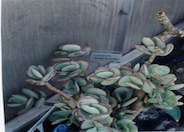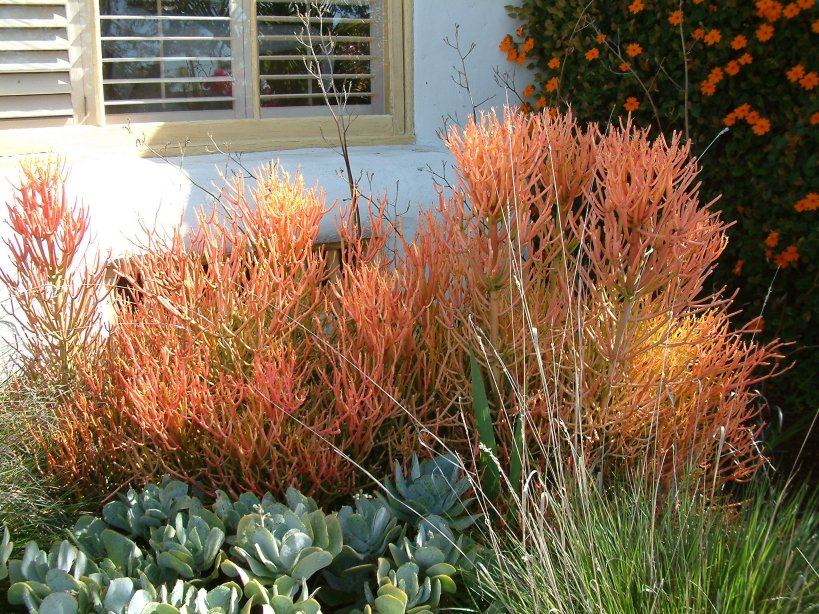
Common name:Silver Jade Plant
Botanical name:Crassula arborescens
This succulent perennial will grow 3'-8' tall and has thick, dark green leaves with a tint of pink around the edges. It will do best in partial shade to full sun and dry or moist soil.

Common name:Jade Plant
Botanical name:Crassula ovata
Crassula ovata is an evergreen shrub that grows to 2' to10' tall and 3' to 6' wide with light green leaves. It like full sun, low watering, and will live in any type of well drained soil.

Common name:Queen Palm
Botanical name:Syagrus romanzoffianum
This palm has a very straight trunk to about 50' in height. It has arching, feathery, bright green, glossy leaves that can be 10'-15' long. It is fragile in heavy winds and a fast grower. It will become damaged in temperature below 24 degrees F.

Common name:Orange Clock Vine
Botanical name:Thunbergia gregorii
This trailing evergreen vine produces large, clear orange flowers from spring through fall. It must be protected from frost and should be grown in areas of sun to part shade. -Monterey Bay Nursery

Common name:Sticks on Fire Pencil Tree
Botanical name:Euphorbia tirucalli 'Sticks on Fire'
In frost free areas, Euphorbia can become a 30' tree but in colder areas, it is often knocked back by frost. It can be single or multiple trunked. It has green cylindrical branches that are about the diameter of a pencil. Leaves are not usually present. Some people are allergic to the sap. It is tolerant of salt, full sun, part shade and quite drought resistant. It is a great accent plant for a container. This form has yellow or orange branches if in full sun.

Common name:Deer Grass
Botanical name:Muhlenbergia rigens
The Deer Grass is a warm season perennial that forms dense clumps from the base. The spike-like flower stalks grow 2'-3' tall and this grass has striking foundation form. The Deer Grass is native to California, is drought tolerant, and is a beneficial insect plant. -Cornflower Farms
Designer: Amelia Lima Design
Photographer: GardenSoft
Physical weed control, including mulching, or hand removal protects the watershed from harmful chemicals.
Be sure to fix all leaks promptly no matter how small they may seem.
Drip and other smart irrigation delivers water directly to roots, allowing no excess water for weeds.